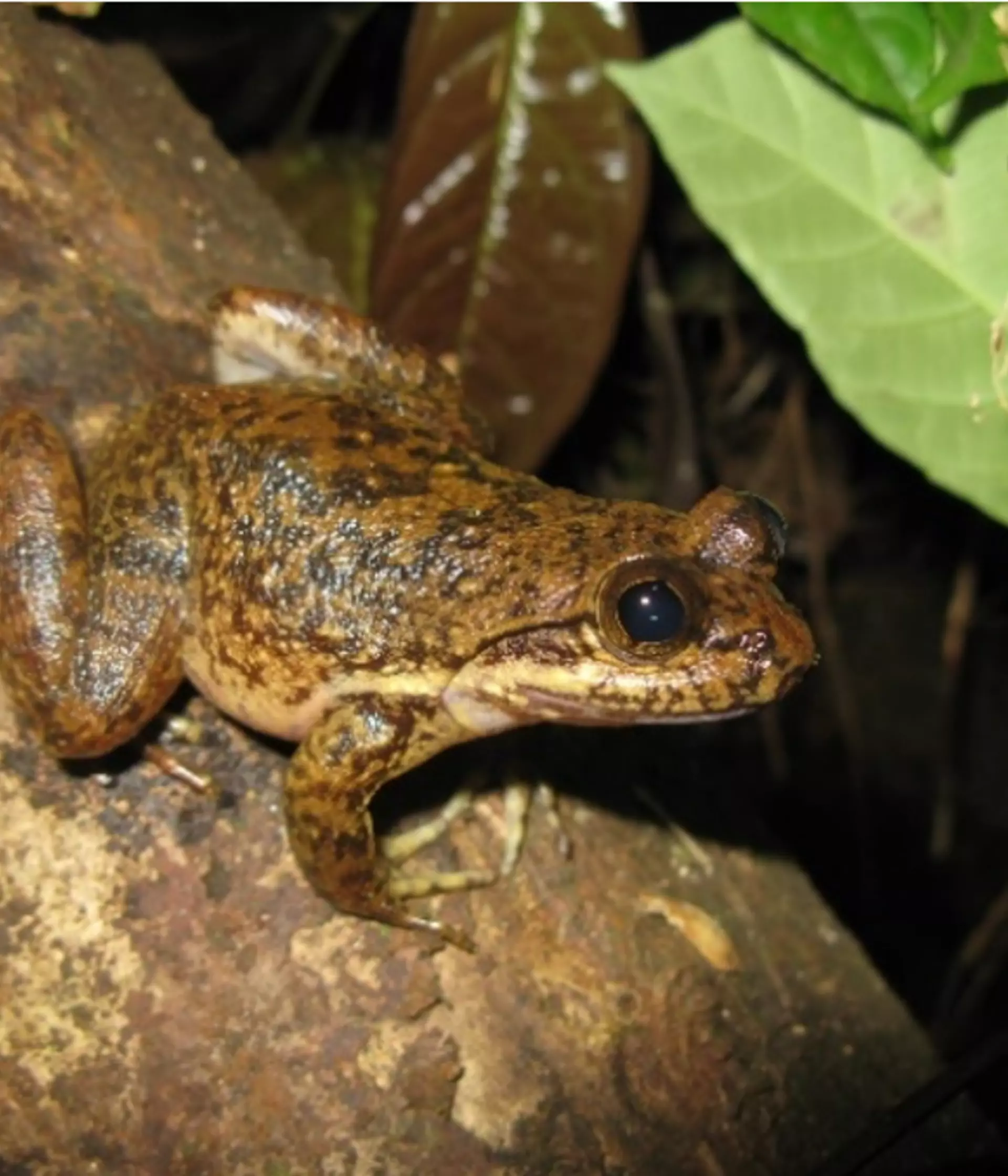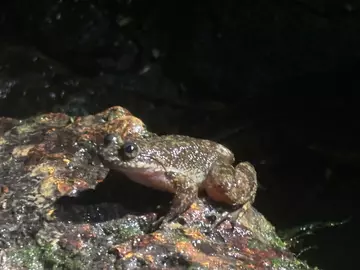
ZSL Herpetologist, Unnar Karl Aevarsson, shares details of his 2024 trip to Ghana where he was part of a team working to save the Atewa Slippery frog from the brink of extinction.
My name is Unnar Karl Aevarsson, and I am a herpetologist at ZSL London Zoo. I have been with ZSL for six years, specializing in the care and breeding of amphibians and reptiles. In May 2024, I travelled to Ghana on behalf of ZSL London Zoo.
Ghana is a rich biodiversity hotspot, home to a remarkable variety of amphibian species. The Atewa Range Forest Reserve, located near Kibi in Ghana’s Eastern Region, spans approximately 725 square kilometres with elevations ranging from 230 to 845 meters. This forest is part of the Upper Guinean forests of West Africa and is one of only two reserves in Ghana that feature an upland evergreen ecosystem.

Establishing a rescue population of the Critically Endangered Atewa Slippery frog
Herp Conservation Ghana, founded and led by Caleb Ofori-Boateng (our EDGE Regional Project Manager for Africa), is dedicated to establishing a rescue population of the Critically Endangered Atewa Slippery frog. These elusive and captivating frogs are native to the streams of the Atewa forest. They also classify as an EDGE species, which stands for Evolutionarily Distinct and Globally Endangered species, are unique and at risk of extinction. These species have few or no close relatives, making them highly distinctive in terms of their evolutionary history. They often exhibit unique characteristics in their appearance, behaviour, and genetics. Sadly, their entire habitat is at imminent risk of destruction due to bauxite mining activities.
ZSL and Herp-Ghana collaborate to conserve amphibians. We have previously worked together to study, describe, and protect the fascinating amphibian species in Ghana. Due to the imminent threat to the newly described Atewa Slippery frog (described in 2021 by Caleb Ofori-Boateng), ZSL sent me to Ghana to collaborate with Herp-Ghana in efforts to conserve this species.
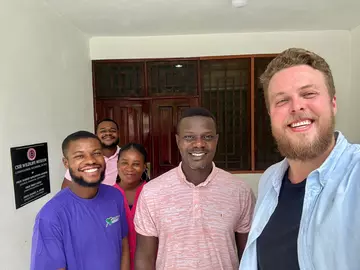
Conservation powered by science
Our mission was to set up aquariums and visit the streams in Atewa to collect Slippery frog tadpoles, which we would then rear at the facility and to offer further training in amphibian husbandry and care. This task was challenging because we were unsure of the exact water parameters and diet the tadpoles required. Therefore, it was crucial for us to gather as much data as we could from the field to replicate their natural environment back at the facility.
I flew out to Ghana in May 2024. I brought along two suitcases packed with equipment and a rucksack bursting at the seams to help us gather the data and to set up the aquariums to the tadpoles liking. Despite the hassle of lugging the equipment across continents, it was well worth it, though my lower back might disagree.
For two weeks, I worked with the Herp-Ghana team. During my first week, the Herp-Ghana team and I focused on setting up the aquariums in their new facility at the Forestry Research Institute in Kumasi. This is the first dedicated facility for amphibian conservation breeding in West Africa, marking a significant milestone in the region’s efforts to protect and preserve its unique amphibian species.
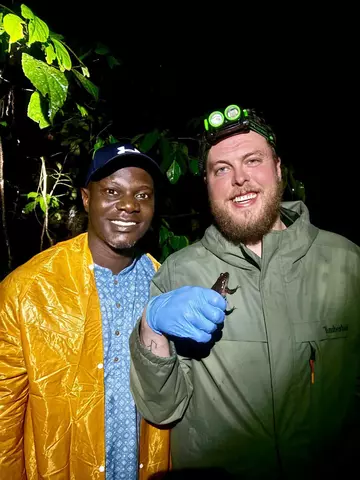
After setting up the aquariums and installing the filtration systems, we began planning our next step: heading to the streams in the Atewa Forest to collect tadpoles.
We went all over Kumasi to find a suitable cooler box to transport the tadpoles in. With the equipment ready we drove to the Atewa Forest and meet the forest rangers. They took us on their pickup truck up to the streams where the slippery frogs inhabit. Unfortunately there was torrential rain that day, so the path to the stream was muddy and challenging to get up and the truck would frequently get stuck. We constantly had to jump out of the truck to lighten the load and push it.
We arrived at the stream an hour before nightfall and immediately got to work. The Herp-Ghana Team and I grabbed our fish nets and torches and began searching for the tadpoles. The stream was fast-flowing, and the heavy rainfall had washed a lot of mud into the river, making it very murky. Despite this, we still managed to catch 11 tadpoles and even one newly metamorphosed frog.
Shortly after sunset, all the adult slippery frogs began to appear in the river. We could see their large, reflective, bulging eyes on the water’s surface, and they started calling with their distinctive high-pitched sounds. It seemed like no other frogs inhabited the stream. Witnessing the frogs in their natural habitat was a truly unforgettable experience, the stream is their home and has been for thousands of years.

After spending a few hours catching the tadpoles, we took water samples, rocks, leaf litter and environmental data from the stream, then moved the tadpoles to the cooler box and headed back to the facility. Upon arrival, we quickly acclimated and released the tadpoles into their new aquariums.
The following morning, we eagerly checked on how the tadpoles had settled into their new homes. Interestingly, despite having full intestines and passing faeces, they showed no interest in the fancy algae pellets I had brought from London. This unexpected behaviour prompted us to closely monitor their feeding activities. We observed that they spent a significant amount of time grazing on the leaf litter we had collected from the stream.
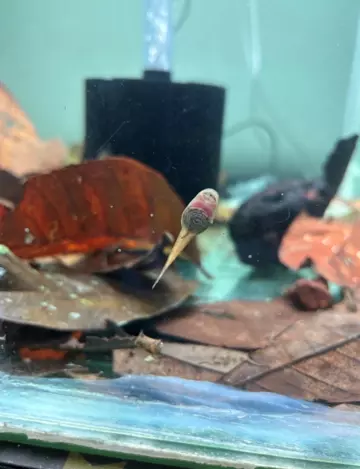
Further investigation into their mouthpart structures, in consultation with Ben Tapley, the Curator of Herpetology, revealed that these tadpoles differ from the typical algae-consuming species. Instead, the Atewa slippery frog tadpoles appear to be detritivores, consuming decomposing leaf matter in the streams. Although such a diet is unusual, it is not unique to this species. Nonetheless, this discovery is crucial for conserving the Atewa slippery frog.
We invited a leading botanist from the Ghana Forestry Commission, who successfully identified the various leaf types we had collected from the stream. With this information, Caleb organised a team of people to acquire additional leaf litter to ensure the tadpoles remained well-fed.
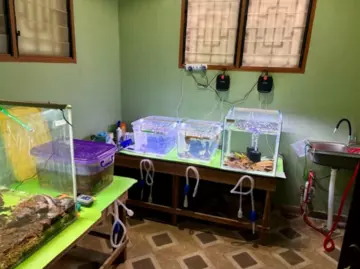
During my final days in Ghana, I worked closely with the technicians to care for the tadpoles and establish a husbandry protocol. Before returning to London, I entrusted the tadpoles to the capable hands of the technicians. I hope to have the chance to return soon, as there's still much to learn about this elusive frog.
